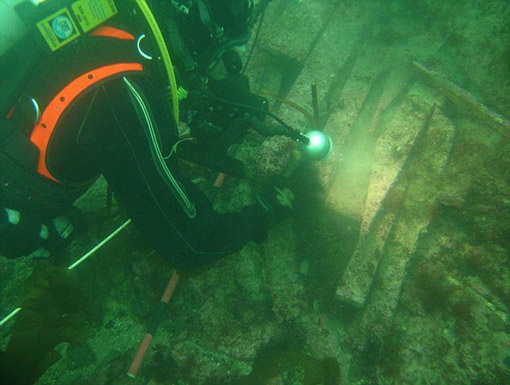The New Observer
August 11, 2013

The astonishing “discovery” (actually just an announcement of a previously known discovery) of the submerged area called “Doggerland” which once stretched from Scotland to Denmark, may yet spark one of the greatest revisions to European history yet.
Previously, all theories, based upon archeological evidence, indicated a post-mini-ice age origin of European peoples “somewhere to the south.”
The new discoveries in Doggerland, described by one scientist as the “real heartland of Europe” may turn out to be the final proof that Europeans in fact originated in the North, and only “fled” south as rising meltwaters at the end of the last mini-Ice Age forced them away.
According to news reports, Doggerland was “a huge area of dry land that stretched from Scotland to Denmark was slowly submerged by water between 18,000 BC and 5,500 BC.
“Divers from oil companies have found remains of a ‘drowned world’ with a population of tens of thousands – which might once have been the ‘real heartland’ of Europe.
“A team of climatologists, archaeologists and geophysicists has now mapped the area using new data from oil companies – and revealed the full extent of a ‘lost land’ once roamed by mammoths.
The research suggests that the populations of these drowned lands could have been tens of thousands, living in an area that stretched from Northern Scotland across to Denmark and down the English Channel as far as the Channel Islands.
The area was once the ‘real heartland’ of Europe and was hit by ‘a devastating tsunami’, the researchers claim.
The wave was part of a larger process that submerged the low-lying area over the course of thousands of years.
‘The name was coined for Dogger Bank, but it applies to any of several periods when the North Sea was land,’ says Richard Bates of the University of St Andrews. ‘Around 20,000 years ago, there was a ‘maximum’ – although part of this area would have been covered with ice. When the ice melted, more land was revealed – but the sea level also rose.
‘Through a lot of new data from oil and gas companies, we’re able to give form to the landscape – and make sense of the mammoths found out there, and the reindeer. We’re able to understand the types of people who were there.
‘People seem to think rising sea levels are a new thing – but it’s a cycle of Earht history that has happened many many times.’
Organised by Dr Richard Bates of the Department of Earth Sciences at St Andrews, the Drowned Landscapes exhibit reveals the human story behind Doggerland, a now submerged area of the North Sea that was once larger than many modern European countries.
Dr Bates, a geophysicist, said: ‘Doggerland was the real heartland of Europe until sea levels rose to give us the UK coastline of today.
We have speculated for years on the lost land’s existence from bones dredged by fishermen all over the North Sea, but it’s only since working with oil companies in the last few years that we have been able to re-create what this lost land looked like.
 Daily Stormer The Most Censored Publication in History
Daily Stormer The Most Censored Publication in History


